-
Posts
12444 -
Joined
-
Last visited
-
Days Won
554
Content Type
Profiles
Forums
Events
Everything posted by Fiery
-
The above mentioned new AIDA64 beta build is now available for download: https://www.aida64.com/downloads/latesta64xebeta
-
All I know is that VIN0 is Vcore But at idle its value shouldn't be used.
- 24 replies
-
- rampage vi apex
- rampage vi
-
(and 3 more)
Tagged with:
-
VIN0 line holds VCore, not VCCIN.
- 24 replies
-
- rampage vi apex
- rampage vi
-
(and 3 more)
Tagged with:
-

fixed: Asus Maximus X Hero not all sensors detected
Fiery replied to facboy's topic in Hardware monitoring
We may enable that in the near future, but only via a Stability option as you've suggested. -

fixed: Asus Maximus X Hero not all sensors detected
Fiery replied to facboy's topic in Hardware monitoring
Thank you for your feedback. Measuring W_IN and W_OUT would require EC (Embedded Controller) bank switching, which is a dangerous procedure to perform on Asus motherboards. EC bank switching may collide with Asus' own AI Suite software package or its underlying service components, or the BIOS itself, and could cause system lockup or other stability issues. T_Sensor is a generic label, meaning Temperature Sensor, that's why AIDA64 also uses a generic label for it. It's correct that way. On your motherboard Fan #4 will be renamed to "Water Pump" fan in the next AIDA64 beta update due in a few days from now. -
AIDA64 CPUID Panel shows Vcore, matching the "CPU Core" voltage reading on the Computer / Sensor page. There's no separate CPU VRM voltage rail that one could measure on your motherboard AFAIK. We'll add +3.3V readout in the next AIDA64 beta update due in a few days from now
- 24 replies
-
- rampage vi apex
- rampage vi
-
(and 3 more)
Tagged with:
-
As long as your CPU works stable at those high temperature levels, and your CPU isn't throttling, you have nothing to worry about. AIDA64 System Stability Test -- especially its FPU subtest -- puts the worst case scenario on your system, so it's normal that it heats up immensely during the test.
-
Thank you. We'll implement advanced support for your motherboard in the next AIDA64 beta update due in a few days from now. I'll post a message into this topic once the new AIDA64 beta build is available for download.
-

Fan Speeds, Voltage Values Missing (Asus TUF X299 Mark 1)
Fiery replied to korhanby's topic in Bug reports
Thank you. We'll implement advanced support for your motherboard in the next AIDA64 beta update due in a few days from now. I'll post a message into this topic once the new AIDA64 beta build is available for download. -

AIDA64 dont recognize processor and memory benchmark error (Core i9-7920X)
Fiery replied to zilin's topic in Bug reports
There's nothing wrong with the actual benchmark results on your system. The warning message pops up simply to remind you that it doesn't use the full potential of your CPU, since it doesn't utilize AVX-512 yet, but only AVX2+FMA. We're still working on AVX-512 optimizations, and hope to be able to roll it out in mid-January. -
It's best to try to run the FPU subtest alone first, for a few hours. If your system can stand that, then without stopping the test just enable all the others, and let it run for a few more hours. If no error message, no sudden system restart, power-off or lockup occurs, then your system is considered pretty stable
- 1 reply
-
- 1
-

-

fixed: CPU wattage meter (Core i7-5930K + Asus X99-Deluxe)
Fiery replied to sblantipodi's topic in General Discussion
The "CPU" power reading should match the one measured by Asus' own software. The "CPU Package" power doesn't work because of the mentioned SVID configuration issue.- 17 replies
-
- x99-deluxe
- asus
-
(and 1 more)
Tagged with:
-
All I can tell you about the Vcore issue is that AIDA64 does what the BIOS does on your motherboard. If the logic behind it seems odd, well, then the BIOS works odd too We've added the requested CPU Cache voltage reading in the latest beta version of AIDA64 Extreme available at: https://www.aida64.com/downloads/latesta64xebeta After upgrading to this new version, make sure to restart Windows to finalize the upgrade. Let me know how it works
- 24 replies
-
- rampage vi apex
- rampage vi
-
(and 3 more)
Tagged with:
-

fixed: Asus Maximus X Hero not all sensors detected
Fiery replied to facboy's topic in Hardware monitoring
Please upgrade to the latest beta version of AIDA64 Extreme available at: https://www.aida64.com/downloads/latesta64xebeta After upgrading to this new version, make sure to restart Windows to finalize the upgrade. Let me know how it works -
Thank you for the data. It seems to me that the problem is that your CFA634 display is not the CFA634-USB display that is supported by AIDA64. Our software currently only supports factory USB variants of Crystalfontz displays. It doesn't support serial displays connected with proprietary (or 3rd party) solutions like what you seem to be using. Or maybe you have a factory (Crystalfontz made) CFA634 version that predates the CFA634-USB variant that we are aware of?
-
Please right-click on the bottom status bar of AIDA64 main window --> Sensor Debug --> ISA Sensor Dump. Copy-paste the full results into this topic, or attach the results as a TXT file to your post. You may need to enable status bar in AIDA64 / main menu / View first. Thanks, Fiery
-

fixed: CPU wattage meter (Core i7-5930K + Asus X99-Deluxe)
Fiery replied to sblantipodi's topic in General Discussion
You need to add that reading by clicking on the Preferences button on the bottom of the System Stability Test window --> Powers --> select "CPU" from the list of one of the items there.- 17 replies
-
- x99-deluxe
- asus
-
(and 1 more)
Tagged with:
-
Slight throttling (under 10%) is normal for Intel Haswell processors under heavy load. It is due to the integrated voltage regulator (FIVR) of those processors. As long as the throttling is not excessive (over 20%), you don't need to worry about it.
-

fixed: CPU wattage meter (Core i7-5930K + Asus X99-Deluxe)
Fiery replied to sblantipodi's topic in General Discussion
On certain Asus motherboards (like yours for example) AIDA64 shows a "CPU" power reading (as opposed to "CPU Package" power) that comes from the onboard sensor chip. You may refer to the same reading displayed by AI Suite.- 17 replies
-
- x99-deluxe
- asus
-
(and 1 more)
Tagged with:
-
AFAIK it's the same there too.
- 24 replies
-
- rampage vi apex
- rampage vi
-
(and 3 more)
Tagged with:
-
Mice007 meant the send/receive files feature of the Remote Control module. Try to initiate a Remote Control session, and you'll see a separate Tools menu on the Remote Control client window.
-
Since LCD Smartie is not our software, nor did we develop the plugin for it, I cannot assist you regarding that issue. As for the direct support for Crystalfontz in AIDA64, please right-click on the bottom status bar of AIDA64 main window --> System Debug --> USB Dump. Copy-paste the full results into this topic, or attach the results as a TXT file to your post. You may need to enable status bar in AIDA64 / main menu / View first. Thanks, Fiery


